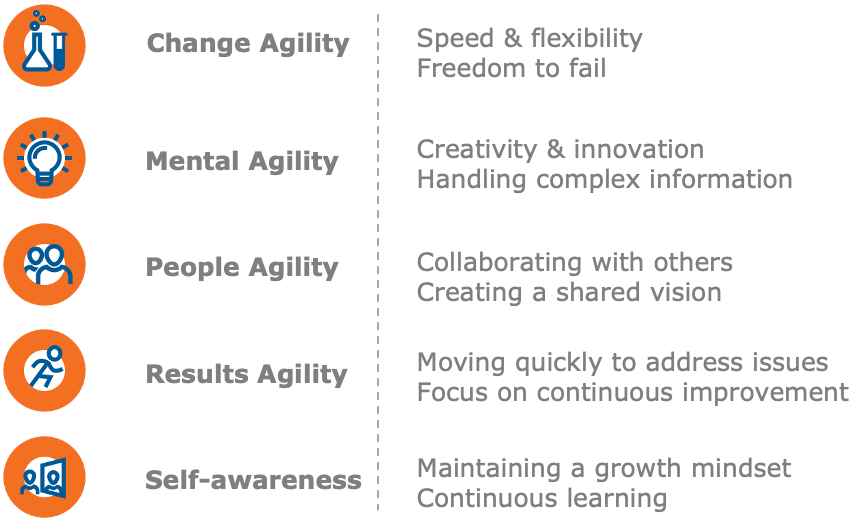Agile Leadership: What is it and Why does it Matter?
Agile leadership plays an essential role in organisations of the 21st-century. In order to be proactive and stay ahead of the shifting demands of business, leaders need to instill and drive an agile culture within the organisation.
This requires a number of new capabilities and skill sets from leaders. But what is agile leadership exactly? What skills are we searching for? Can these capabilities be pinpointed, selected for and developed? We explore these questions in more detail below.
What is Agile Leadership?
In order to understand agile leadership, one needs to understand the origins of the term agile. The agile workstyle first arose in the software development field and described a team-based approach to projects characterised by experimentation, iterative problem solving and the step-by-step delivery of results.
Since its conception in 2001, agile has become a highly popular project management style across departments. Why? Because it’s been shown to be effective in the face of complexity, change and constantly shifting goals.
Agile leadership, according to the experts, is the art of applying the principles of agility to one’s management style in order to create the ideal environment for agile teamwork and ultimately, to help shape an agile organisation.
Traditional vs Agile Organisations
Traditional management styles evolved from the needs of businesses in the past, with an emphasis on stability, planning and control. Do these needs sound relevant to businesses today?
As the agile workstyle has spread beyond its initial narrow application, businesses have seen the commercial benefits of an agility-driven culture and workforce. Agile organisations, and their people, are designed for the demands of the 21st-century; they are built to thrive in dynamic, unpredictable and fast-moving environments. Guiding the organisation from a traditional model to an agility-driven model is the crux of agile leadership.
What are the Traits of an Agile Leader?
Agile leaders are characterised by a number of different capabilities:
-
Being proactive and flexible in response to changing demands. This means anticipating change, having an initial plan to tackle it and being able to iterate on the plan over time as the goalposts shift.
-
Giving employees – and themselves – the freedom to come up with ideas, experiment and potentially make mistakes. Easier said than done!
-
Inspiring creativity and innovation when approaching problems and demands.
-
Creating calm within the complexity. This involves proactively tackling complex issues, considering longer-term objectives and guiding employees to a solution.
-
Actively driving collaboration and collaborative problem-solving.
-
Working with colleagues and employees to create a shared vision for the organisation. It’s also important to touch base with employees regularly to communicate and build upon this vision.
-
Moving at a fast-pace in response to needs and demands. This is a critical skill to avoid falling behind one’s competitors.
-
Driving a culture of continuous improvement and being able to let go of approaches or processes that are no longer working.
-
Adopting a growth mindset and helping to plant the seeds for continuous learning throughout the organisation.
-
Creating an open environment that encourages upward communication and constructive feedback from employees.
Measuring and Developing Agile Behaviour
How do we take the list of capabilities above and instil them within our leaders and within our organisations? In other words, how do we create a strategic plan to address these new demands?
There is a long list of capabilities, and no leader is ever going to embody them all perfectly. However, what is important is to know where a leader stands and to constantly develop these agility-focused skills over time.
Learning Agility is one key method of operationalising agile leadership. Its five domains can be mapped to the required agile behaviours, can provide a measurement at a particular point in time and can form the basis for development initiatives.

Coaching, role modelling, mentorship and capability-building programmes are all approaches that can be taken to actively drive agile behaviour amongst leaders. These initiatives need to be driven by the most senior members of the organisation to instil the attitudes, mindsets, capabilities and experimentation needed to create an agile culture.
Author
Lumenii's team of expert psychologists regularly collaborate to share their ideas and knowledge. The latest case studies, thought leadership, and research.